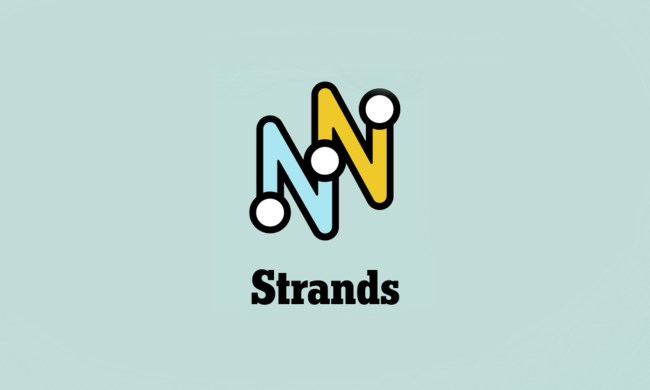

Paper Mario: The Thousand-Year Door’s Nintendo Switch remake is here, and that’s a big deal for fans of this Mario subseries. Paper Mario has been around since the Nintendo 64 days and has seen many iterations across most of Nintendo’s platforms since then. It has gone through different shapes and forms throughout that time, some more well-liked than others. None are more beloved than The Thousand-Year Door.
Released for GameCube in 2004, The Thousand-Year Door refined the traditional turn-based RPG formula that the original Paper Mario established. It excelled in its writing and characters, as it takes a lot of creative risks, creates memorable original characters, and isn’t bashful about being one of the funniest Nintendo games ever made. It’s considered a high point in a series that has had a divisive run in the two decades between that original release and this remake.
Now that Paper Mario: The Thousand-Year Door is back on Nintendo Switch and I’ve played through the whole thing for myself, I understand why this game needed a remake. The Thousand-Year Door is unlike almost any other Mario game out there because of the emphasis it puts on its comedic writing, quirky cast of characters, and placing Mario in a variety of wacky situations that he had never been in before. It’s the kind of game that has left a lasting impression on many fans — it has even inspired a subset of indie games — but The Thousand-Year Door had never gotten the same love from Nintendo that it had from fans … until now.
The Thousand-Year Door is special
Twenty years ago, the Paper Mario series hit its zenith with The Thousand-Year Door. By making all the right refinements to the formula the Nintendo 64 original established, Nintendo created a GameCube game that would go on to influence a generation of game developers, influencers, journalists, and gamers. It might not get the same credit for having that kind of influence as a game like Dark Souls does, but look around and you’ll quickly notice why The Thousand-Year Door is such an important game.
I never played the original growing up, but even I have nostalgia for it. I have formative memories of watching clips of it on YouTube, finding a lot to love in the dialogue of its quirky characters and creative chapter themes. I’ve gone on to at least try every other game in the series based on the strength of those clips. I’m far from the only person influenced by The Thousand-Year Door; it’s loved by all kinds of people.

Whole podcasts have been structured around the series and love for this game. For his recurring podcast series Chapter Select, Max Roberts plays through an entire series of video games and gives his thoughts on each one. The inaugural Chapter Select series was on Paper Mario, and Roberts explained to Digital Trends that his love for The Thousand-Year Door influenced his decision to feature the series on his podcast. Roberts told Digital Trends that it is a “quintessential RPG” that fires on all cylinders across its world, battle system, soundtrack, and writing.
“Intelligent Systems took a refinement approach with the game that paid off in spades,” Roberts tells Digital Trends. “I think the game has stood the test of time because it’s greater than the sum of its parts. There’s a colorful cast of characters that you can’t help but fall in love with. The world is unique and diverse, and it feels grounded in the world of Super Mario without the rigidity of a traditional Mario-based platformer. The battle system is sticky in a way that invites strategy and mastery without being complex. When all added up, the pieces come together to make a special game and experience.”
Game developers have been inspired by the classic Paper Mario RPGs as well. As the series strayed away from those RPG roots, indie developers filled the void with inspired experiences. Notable indie games inspired by Paper Mario include Bug Fables and Born of Bread. I spoke to the developers of Born of Bread, who shared how the early Paper Mario RPGs had inspired it.

“The thing that resonated with us the most while playing classic Paper Mario RPGs was how different they felt from other games in the genre,” Gab from WildArts Games tells Digital Trends when asked about Paper Mario’s influence. “There’s this sense of light-heartedness and fun in every aspect of these games, whether it’s graphical or mechanical. Whatever type of player you are, there’s something to enjoy: you can explore the levels in search of secrets, talk to a bunch of quirky NPCs and wonder where the story will take you next, or play around with your badges to find the best combat strategy. These things really inspired us to make Born of Bread, and the fact that Nintendo seemed to want to move away from that encouraged us even more to try our hands at the formula.”
The Thousand-Year Door was left behind
In 2004, praise for The Thousand-Year Door is glowing. Even if it’s not the bestselling GameCube game, the expectation would be that Nintendo and developer Intelligent Systems would look at what worked so well with The Thousand-Year Door and expound upon that in every subsequent Paper Mario game. Oddly, the Paper Mario series instead strayed from the formula The Thousand-Year Door delivered, which played a part in immortalizing it as an all-time classic that deserved a remake.
2007’s Super Paper Mario was a platformer, while 2012’s Sticker Star, 2016’s Color Splash, and 2020’s The Origami King had gimmicky battle systems and didn’t feature robust experience systems, making their battles feel like pointless filler. The newer Paper Mario games also didn’t feature much in the way of original characters, which is one of the strongest aspects of The Thousand-Year Door. We got a little insight into why from Nintendo EPD Assistant Producer Risa Tabata in a 2020 interview with VGC. “Games are entertainment, so I want the people who play our games to say ‘Wow!'” Tabata said. “My understanding is that if we want to give players these positive surprises, we can’t do exactly the same thing that’s been done before.”

Although Paper Mario was beloved by so many, Nintendo essentially thought that in order to keep the series relevant, it had to keep shaking things up drastically with each new entry. I do believe that experimenting, testing new mechanics, and stretching a series’ concept to its limits are necessary for survival. There are also a lot of great things to be found in the less-loved Paper Mario games, particularly when it comes to their gorgeous papercraft visuals and willingness to tool around with core battle systems. The Paper Mario series has been like that much longer than it was only an RPG series, but many fans could never shake the feeling that every Paper Mario game after The Thousand-Year Door felt a bit off.
“I realized the franchise has always used the idea of paper as a pathway to new mechanics; it just didn’t look like paper until the 3DS entry,” Roberts says. “There is a spirit of experimentation within all the games. Ironically, The Thousand-Year Door may have the least experimentation, instead focusing on refining the ideas and mechanics behind Paper Mario on N64 and Super Mario RPG. I think fans of The Thousand-Year Door often hold firm to the idea that Paper Mario should be like the RPG origins when Nintendo has actually never stuck to that.”
The Thousand-Year Door deserved a remake
A lack of something great — in this case, classic Paper Mario RPGs like The Thousand-Year Door — creates a yearning, and that can go on to inspire people.
In the vacuum Nintendo left behind by moving on with the Paper Mario series, we’ve seen a subset of indie games, which Gab from WildArts calls the “PaperVerse,” that all take inspiration from The Thousand-Year Door. Being the grandfather of a subgenre is an honor The Thousand-Year Door shares with the likes of Rogue and Demon’s Souls. We’ve also seen fans give newer Paper Mario games more lukewarm user scores on platforms like Metacritic and Nintendo influencers like Arlo start hashtag and social media movements like #RemasterThousandYearDoor hashtag in the hopes that Nintendo would listen. There was a clear demand from Paper Mario fans for the series to return to its roots or make The Thousand-Year Door more accessible because it was the only Paper Mario game not available on 3DS, Wii U, or Switch.

And although Nintendo hasn’t said why, the increasingly loud demand for that kind of return has paid off. The fan response to the announcement of The Thousand-Year Door’s Switch remake was overwhelmingly positive, and early critical reviews (including my own) have been positive. Those I talked to for this article are also eager to check the remake out, with WildArts being “in awe at how they managed to make that game even prettier” and “curious to know if they added some things that haven’t been shown yet,” while Roberts is happy that a new generation finally has affordable means to play the game.
Although The Thousand-Year Door isn’t the most innovative RPG ever, it was a creative adventure that took bold swings with its hilarious writing. As a result, it stayed in the hearts and minds of players for two decades, who have finally seen their adoration for this game paid off in the form of a Nintendo Switch remake that is, by all accounts, pretty fantastic.
When you see a game getting remade, it’s often worth looking back and asking why such a remake was warranted. In The Thousand-Year Door’s case, it was an influential game that Nintendo seemed to have left behind but returned to so it could remind players why they love the Paper Mario series.
Paper Mario: The Thousand-Year Door is available now for Nintendo Switch.



